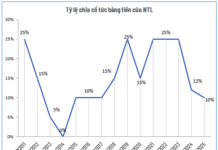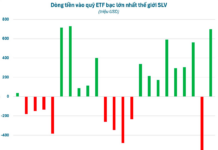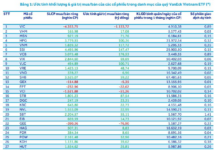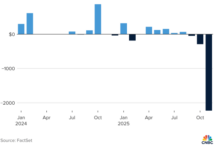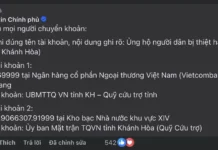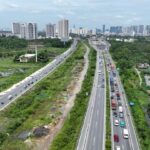Chairman of the People’s Committee of Ho Chi Minh City, Phan Van Mai, has signed a report to the Prime Minister proposing solutions to the obstacles faced in implementing the project “Solving inundation due to high tides in Ho Chi Minh City, taking into account climate change factors – Phase 1” (abbreviated as the “10,000 billion flood control project”).
According to the People’s Committee of Ho Chi Minh City, up to now, there are three remaining difficulties and obstacles that need to be addressed.
The first obstacle is the unclear authority and procedure for implementing the project, which is currently undergoing changes. These modifications lead to the project falling under the criteria of a nationally important project. As the authority and procedural sequence are not specifically guided by the Decree, the People’s Committee of Ho Chi Minh City will propose an implementation plan and report to the Government during the process of adjusting the investment policy of the project.
The second obstacle is the lack of capital to complete the construction. This is due to BIDV Bank not having a sufficient basis to sign a credit contract appendix with Trung Nam BT 1547 JSC to submit to the State Bank of Vietnam for implementing the extension of the disbursement period for refinancing.
Currently, there is no basis for mobilizing entrusted capital for the project investor/enterprise to continue construction and complete the work.

Chuoi Canal Embankment (in Nha Be district) under the 10,000 billion flood control project. Picture: CTV
The People’s Committee of Ho Chi Minh City proposes to consider adjusting the payment method of the signed BT contract towards land fund payment to the investor corresponding to the value of the completed BT project progress as determined by the competent state agency in accordance with the law on investment and construction. The difference will be paid in cash to ensure compliance with the regulations at the time of signing the contract.
The People’s Committee of Ho Chi Minh City assesses that after adjusting the BT contract appendix with the above content, the project will basically overcome the shortcomings mentioned in Article 1 of Resolution No. 40/NQ-CP dated April 1, 2021, of the Government and have sufficient basis for payment of the land funds determined in the BT contract under current regulations. Accordingly, for the land funds determined in the BT contract, the City People’s Committee will carry out the procedure for land fund payment as in regular BT projects according to regulations.
The last difficulty is the lack of basis for BT contract payment. The People’s Committee of Ho Chi Minh City states that the obstacles are related to the provisions of the Law, and some contents are not reflected in the Law’s regulations, such as determining whether the contract is allowed to be paid (after overcoming the shortcomings)…, which is beyond the competence of the Government. The People’s Committee of Ho Chi Minh City will analyze and report in detail during the process of adjusting the investment policy of the project.
According to the People’s Committee of Ho Chi Minh City, as the total investment capital of the project has changed, the project implementation period has ended, the signing and implementation of the contract have some shortcomings, and to ensure a legal basis, it is necessary to implement the procedure for adjusting the project. However, in reality, the procedure for comprehensively adjusting the project is complicated, time-consuming, and requires negotiation and agreement with BIDV Bank and the Investor on the method of calculating interest.
Therefore, the People’s Committee of Ho Chi Minh City proposes to adjust the payment clause in the contract in parallel with the comprehensive adjustment of the project. Specifically, simultaneously carry out the procedure for adjusting the project implementation period as a basis for signing the BT contract appendix to change the payment method.
After adjusting the BT contract appendix, the project will basically overcome the shortcomings mentioned in Article 1 of Resolution No. 40/NQ-CP dated April 1, 2021.
This is the basis for the City to start implementing the payment by land fund, which are the land plots determined in the BT contract according to current regulations, solving the capital source for the Investor to complete the work and reducing the interest expense during the waiting period for completing the project adjustment procedure.
Currently, the Party Committee of the People’s Committee of Ho Chi Minh City has Report No. 1078 dated September 20, 2024, reporting and seeking opinions, and the proposal has been approved by the Standing Committee of the City Party Committee at the conference on September 23, 2024.
According to the People’s Committee of Ho Chi Minh City, the project “Solving inundation due to high tides in Ho Chi Minh City, taking into account climate change factors (Phase 1)” has a total investment of nearly VND 10,000 billion.
The project is implemented in the form of a public-private partnership (PPP), a Build-Transfer (BT) contract type, with payment made through a land fund and the city’s budget.
The project investor is Trung Nam Construction Investment Joint Stock Company. The project enterprise is Trung Nam BT 1547 Limited Company.
The project aims to control flooding due to high tides and proactively respond to climate change for an area of 570 km2 with about 6.5 million people in the right bank of the Saigon River and the central area of Ho Chi Minh City.
The construction scale includes six large tidal control culverts and the construction of a dike along the Saigon River from Vam Thuat to the Kinh River (phase 1), including about 6 km of dikes/embankments in vulnerable sections, 43 small culverts from Vam Thuat to Chuoi Canal; construction of a central management building and a Scada system.
Up to now, the project has been constructed with more than 90% of the workload completed, including the items of Ben Nghe culvert (97%), Tan Thuan culvert (93%), Phu Xuan culvert (90%), Chuoi Canal culvert (93%), Cay Kho culvert (86%), Phu Dinh culvert (88%), and dike route (85%).
According to the signed BT contract and its appendices, Ho Chi Minh City will have to pay the investor with a land fund equivalent to 16% of the project’s settlement value (about VND 1,588 billion). The payment in cash is equivalent to 84% of the project’s settlement value (about VND 8,380 billion).
The Protest Gathering at the Phu Huu BOT Station: Proposal to Expand the Scope of Fee Exemption
According to the investor, the expansion of the exemption policy at the Phu Huu BOT toll station in Thu Duc City, Ho Chi Minh City, will result in a revenue reduction of less than 5%. This minor impact on the station’s revenue stream is expected to have a negligible effect on the overall repayment plan.
The Prime Minister Attends the Plenary Session of the Ho Chi Minh City Economic Forum
The Ho Chi Minh City Economic Forum 2024, themed “Industrial Transformation: A New Driving Force for Sustainable Development in Ho Chi Minh City,” commenced this morning, September 25th.












